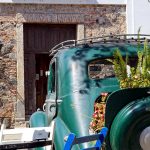Colonia del Sacramento, Uruguay
One Of The Continent's Most Charming Towns, A 17th-Century UNESCO-Listed Cobbled & Leafy Former Smuggling Centre
“A grid of enchanting streets on a small peninsula jutting into the Rio de la Plata, this UNESCO-listed region is made for exploring. You won’t get lost (trust me, it’s too small for that), but you’ll have fun meandering from one plaza to another along cobbled & shaded streets, checking out pastel-coloured tile-and-stucco colonial houses, ye olde churches and ancient fortifications.”
Image || On de San Francisco in Barrio Historico, Colonia del Sacramento. September 20, 2015.
Colonia del Sacramento, Uruguay
I got two bites at the enchanting Colonia del Sacramento cherry, more than any other location on the South American continent, but even that’s probably not enough. This is the kind of place where one could happily while away day after day sipping coffee in leafy plazas while watching the world go by. An old smuggling center at the mouth of the region’s River Plate, the Colonia’s highlight is its historic UNESCO-listed Old Town, Barrio Historico, a compact peninsula full of cobbled & shaded streets and lined by charming buildings in various stages of upkeep. It is, and make no mistake, both Uruguay’s most prized draw and one of the most beautiful & intriguing towns you’ll find anywhere in South America.
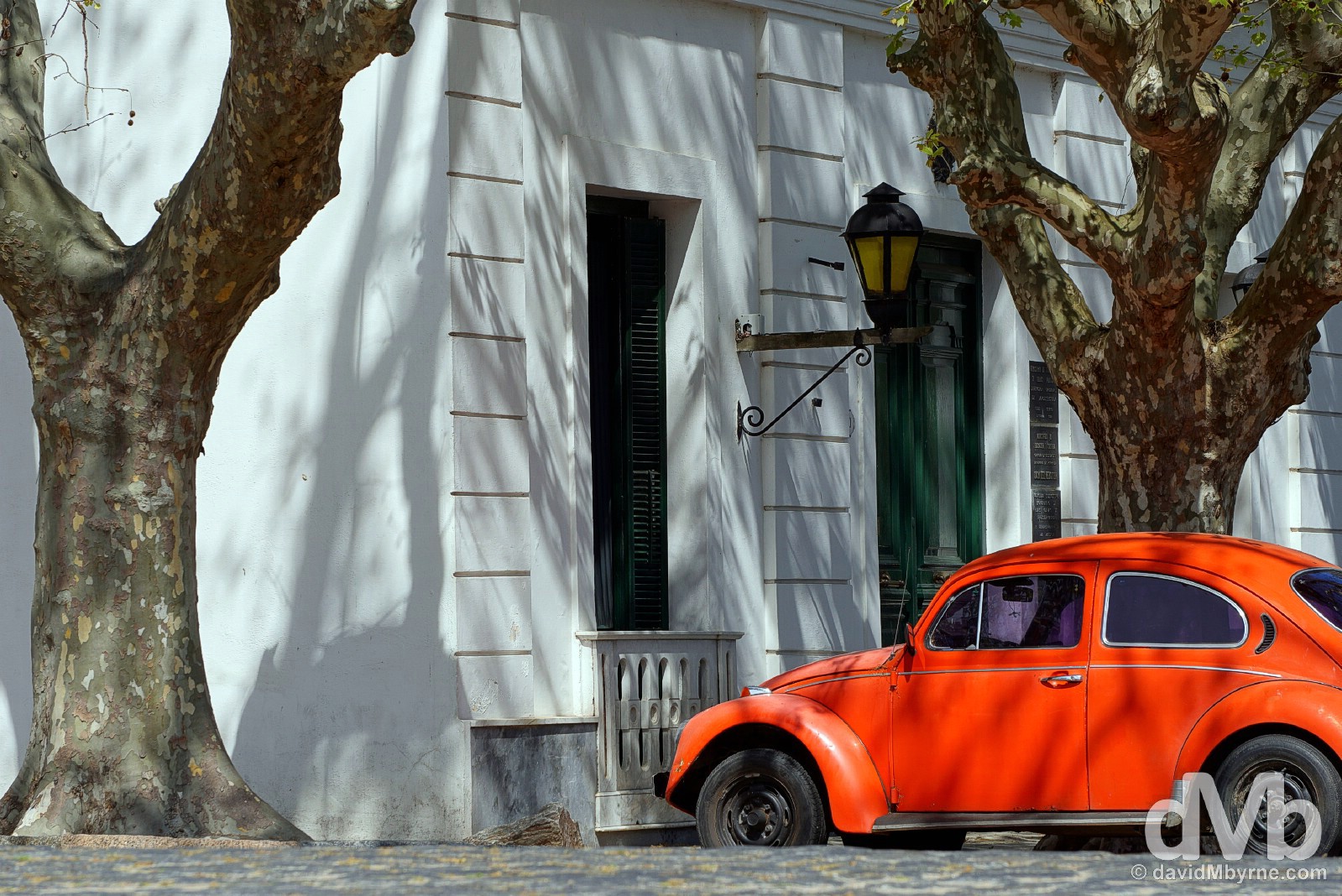
Barrio Historico, Colonia del Sacramento, Uruguay. September 20, 2015.
Barrio Historico
A compact portion of a larger town it may be, but Barrio Historico monopolizes the Colonia love & attention, and rightly so. A grid of enchanting streets on a small peninsula jutting into the Rio de la Plata, this UNESCO-listed region is made for exploring. You won’t get lost (trust me, it’s too small for that), but you’ll have fun meandering from one plaza to another along cobbled & shaded streets, checking out pastel-coloured tile-and-stucco colonial houses, ye olde churches and ancient fortifications.
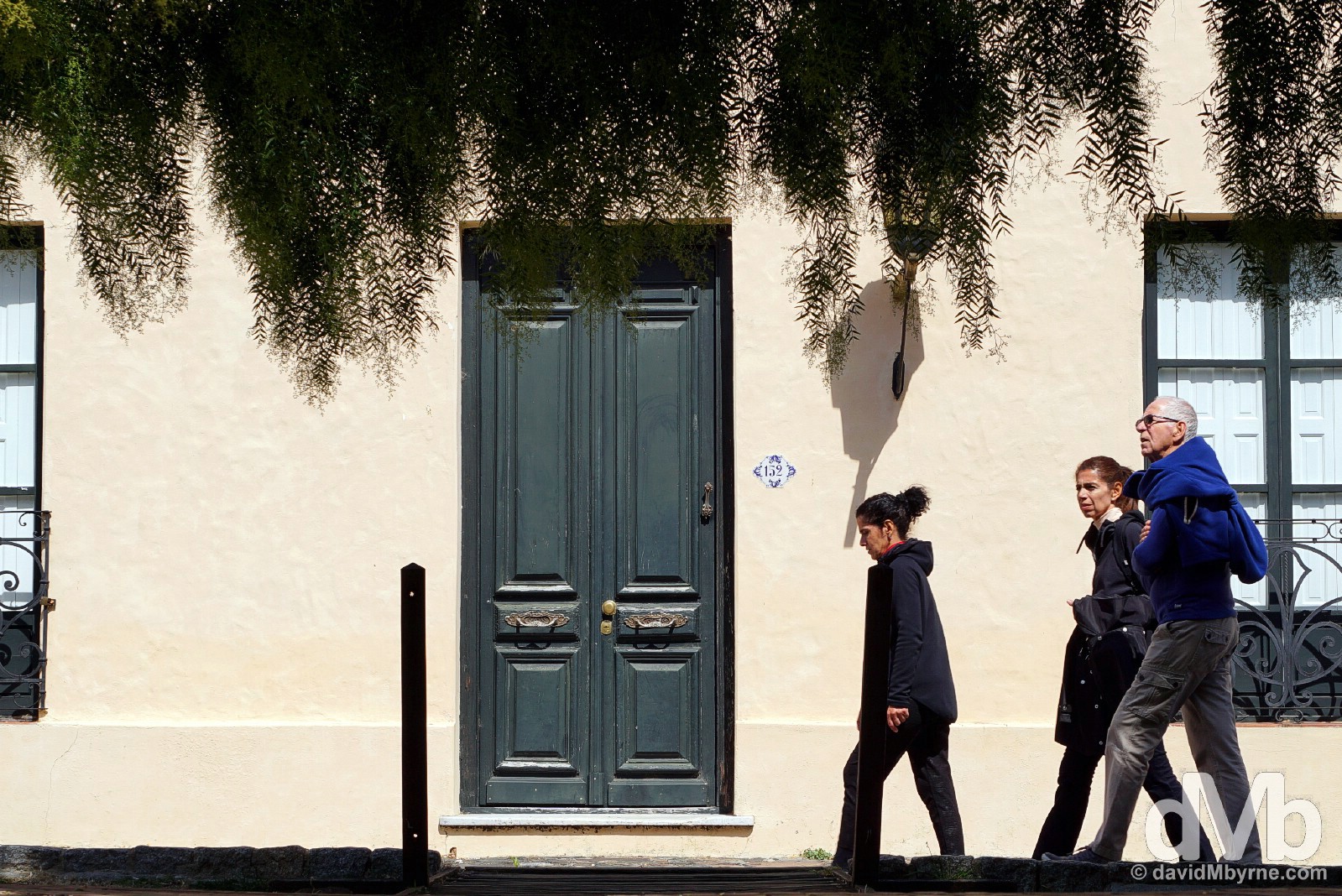
Plaza de Armas, Barrio Historico, Colonia del Sacramento, Uruguay. September 20, 2015.
Colonia del Sacramento & Its Barrio Historico
Strategically placed at the mouth of rivers leading from the South Atlantic Ocean into the heart of the South American continent, the so-called River Plate, this area was once the exclusive preserve of indigenous Indians. The Portuguese first arrived in 1516, although they didn’t make serious efforts to settle the region until much later – January 1680 to be precise when they founded the town. Colonia, and as a threat to Spain’s regional mercantile trade monopoly, was especially susceptible to attack from the Spanish stationed in Buenos Aires a short distance away (50 kilometres) across the Rio de la Plata. A force of Spanish & native Indians first captured the new colony barely 7 months after it was founded, this signalling the start of an elongated period of strife – the colony would change hands between the two European powers some 10 times over the next century-and-a-half, or right up until Colonia was handed over by the Spanish to the new Oriental Republic of Uruguay in 1828. Managing to retain a heady mix of European and Native influences throughout its warring years, the historic quarter of the town, the Barrio Historico, was awarded UNESCO World Heritage status in 1995, the mixed and the well-defined styles of the Portuguese and Spanish architecture reflecting a time when the town played a central role in the most historical events of the region and served as a frontier for regional cultural exchange.
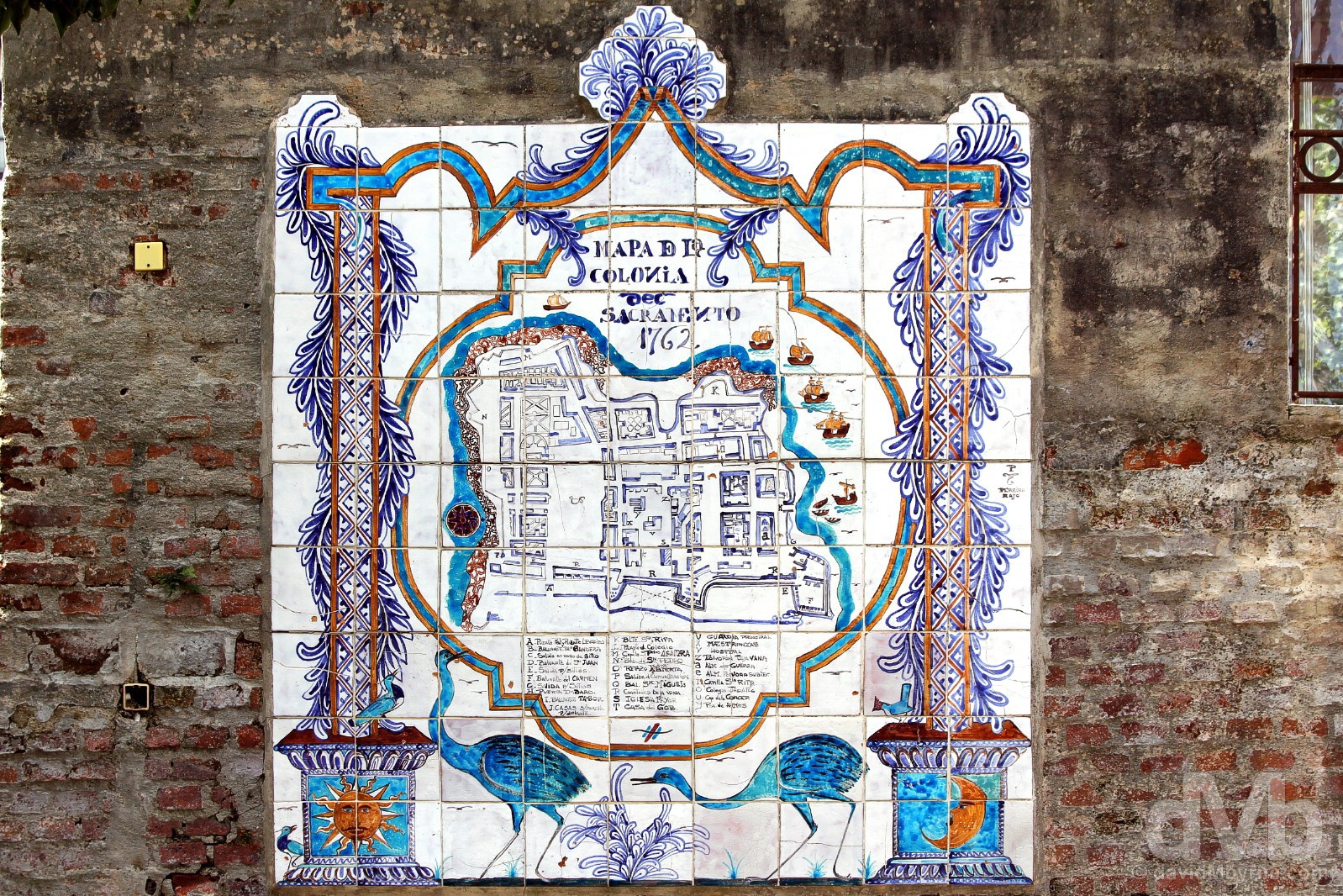
A hand-painted 1762 tile map on the present-day streets of the Barrio Historico in Colonia del Sacramento, Uruguay. September 20, 2015.
– UNESCO commenting on the Historic Quarter of the City of Colonia del Sacramento
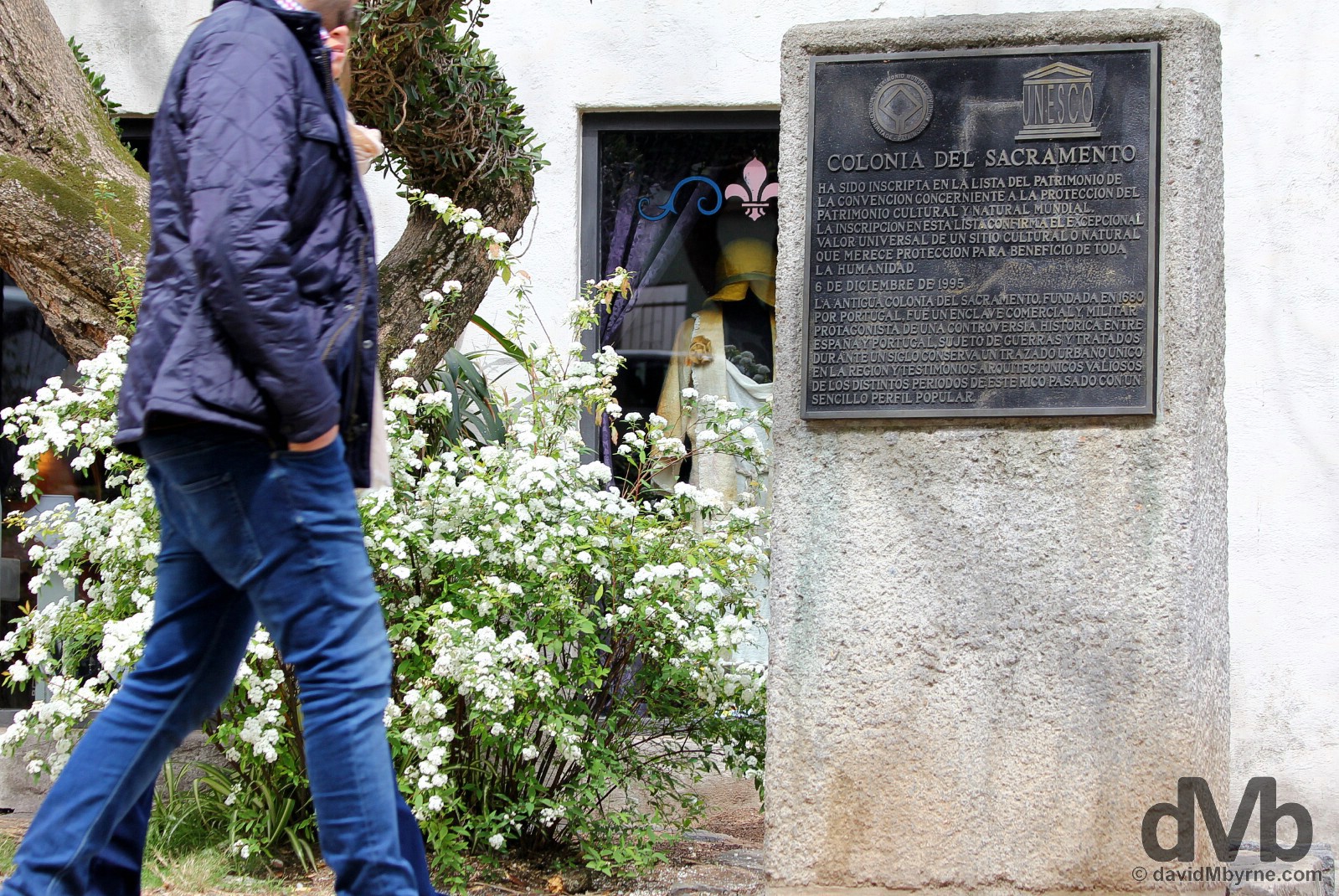
UNESCO-listed Barrio Historico in Colonia del Sacramento, Uruguay. September 20, 2015.
The Colonia Contrast
The only location in South America that I got to sample twice during a six-month-plus exploration of the continent, I passed through Colonia del Sacramento in September when heading west into Argentina, and again three months later when heading north out of Argentina. The town was equally beguiling on both occasions, but visually, and as one might expect given the variation of seasons, there were marked differences.
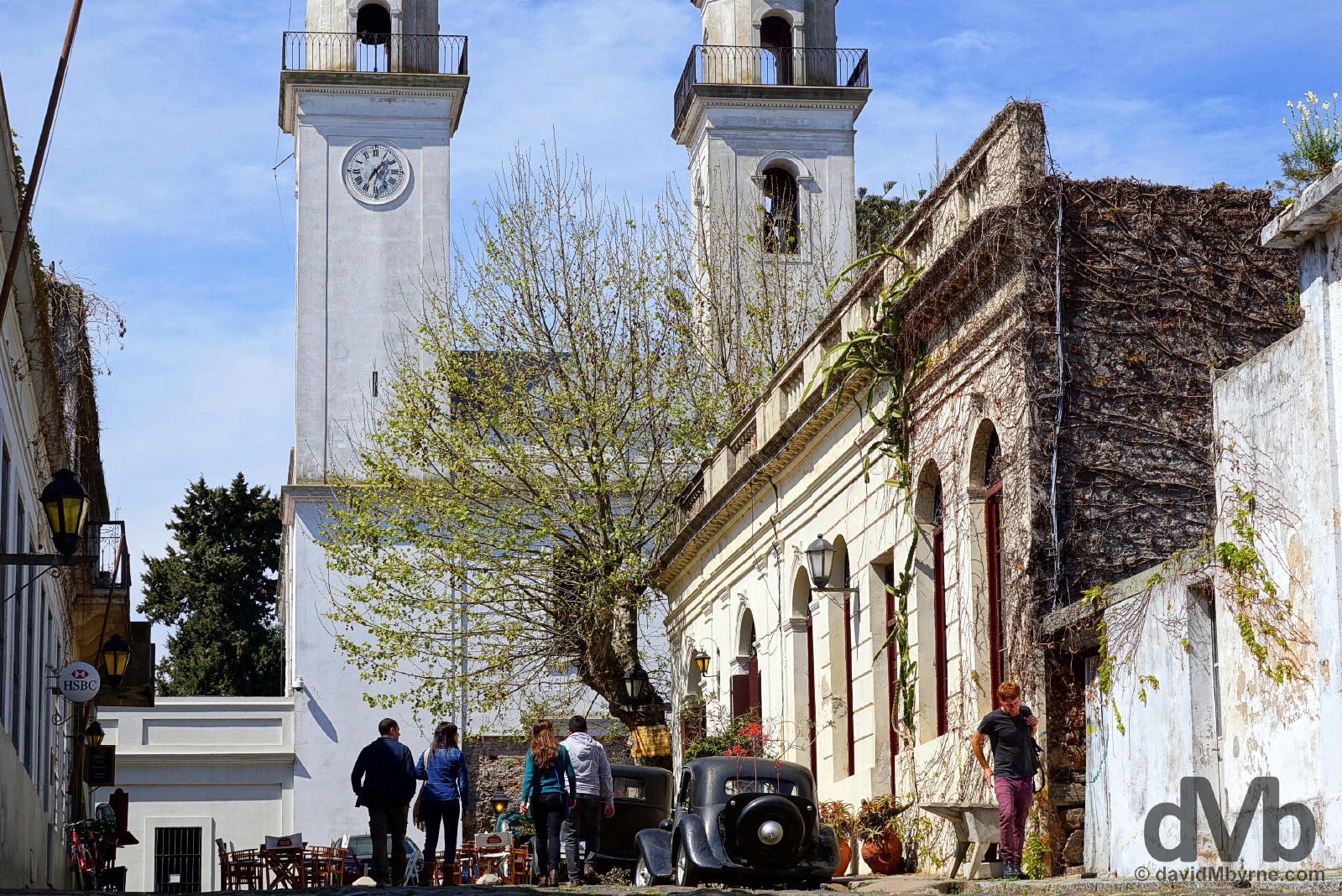
SEPTEMBER 20 2015 || Barrio Historico’s de Portugal is towered over by the distinctive twin towers of Iglesia Matríz, Uruguay’s oldest church – first constructed by the Portuguese in 1680, the year they founded the town, it has suffered down through the years and was completely rebuilt twice under Spanish periods of rule. De Portugal, Barrio Historico, Colonia del Sacramento, Uruguay.
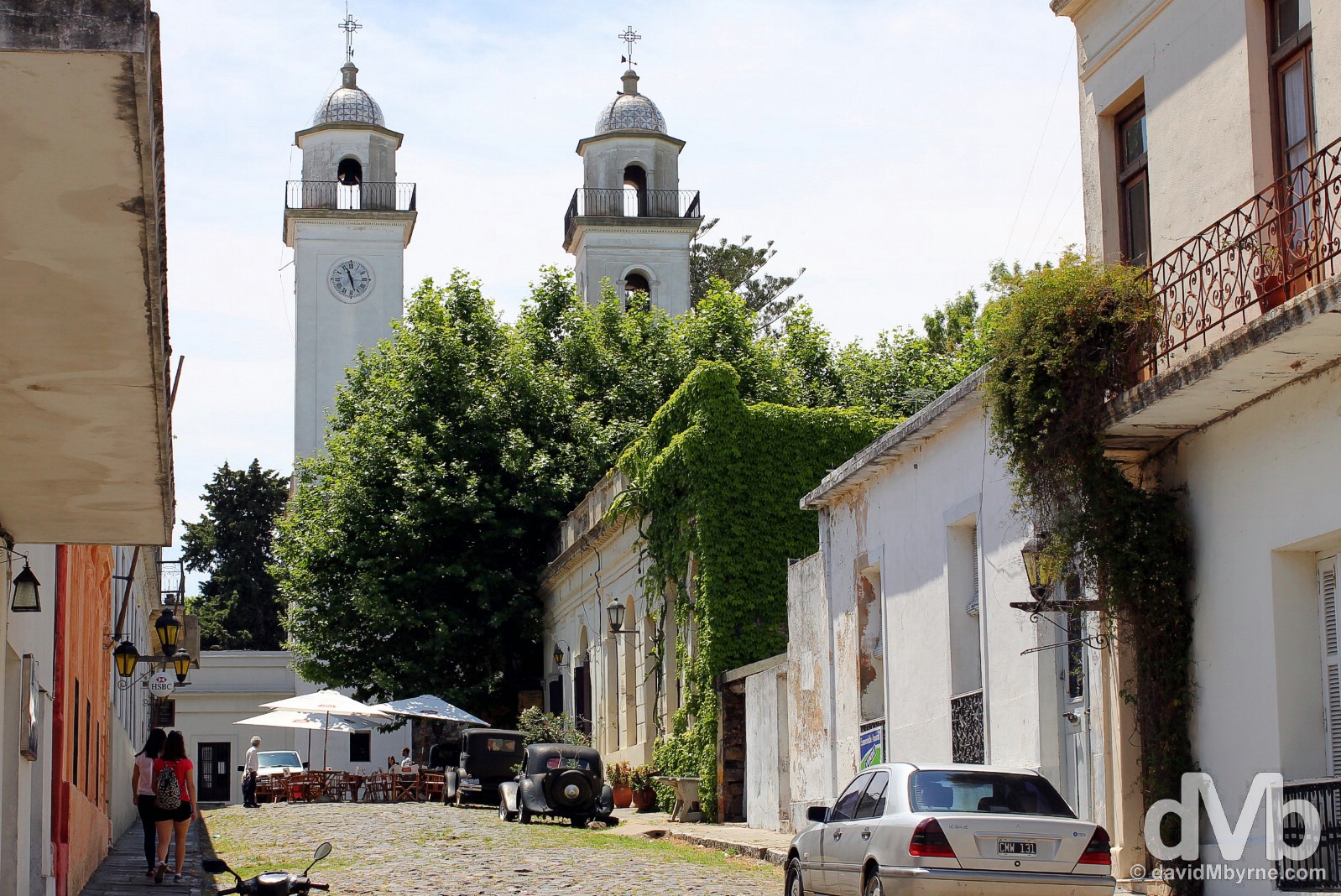
DECEMBER 7 2015 || De Portugal as seen three months later was showing a bit more greenery, understandable given it was at this stage the early southern hemisphere’s summer. Barrio Historico, Colonia del Sacramento, Uruguay.
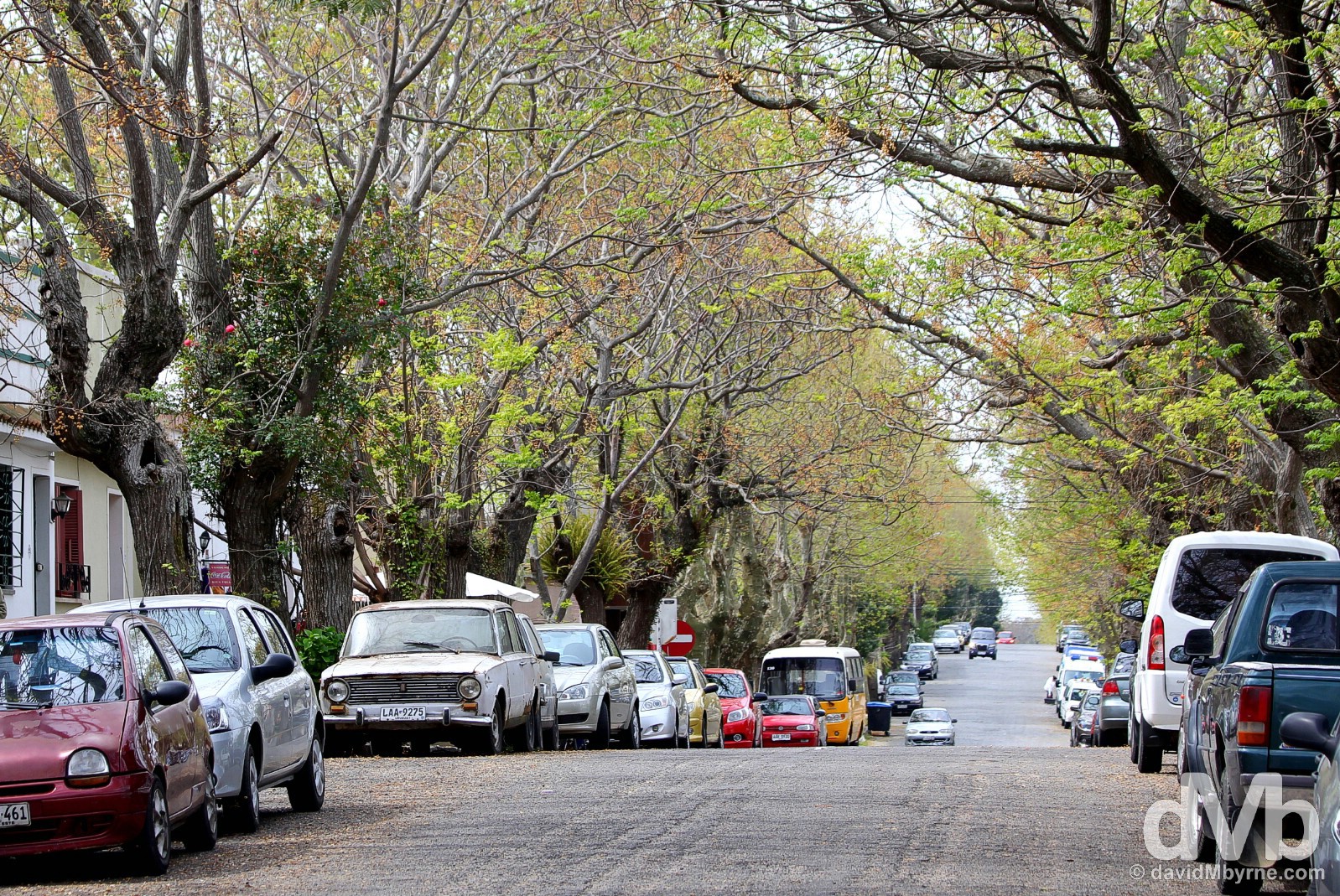
SEPTEMBER 20 2015 || On the shaded streets of outer Barrio Historico, Colonia del Sacramento, Uruguay.
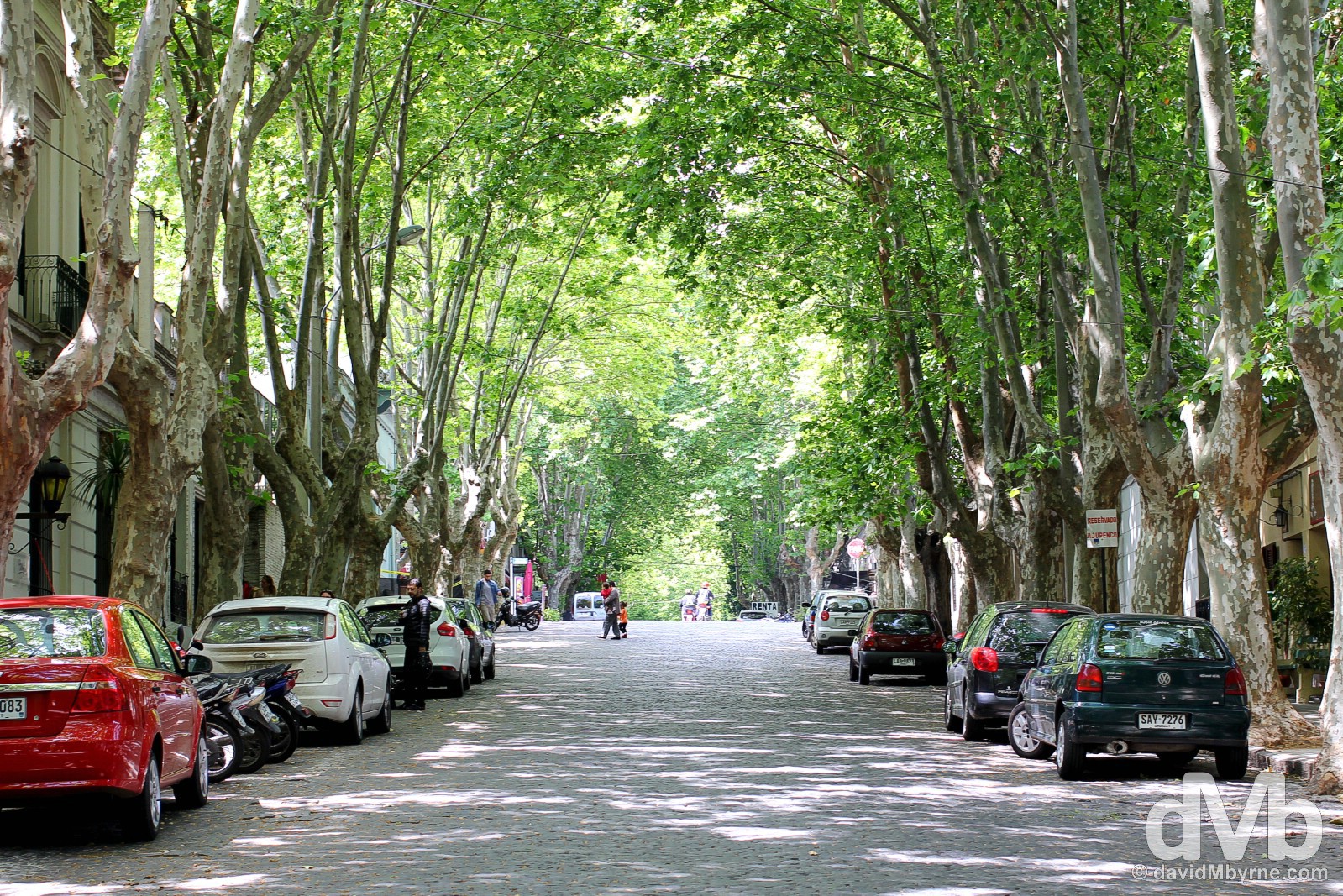
DECEMBER 7 2015 || Again, three months later and things were a tad greener, the foliage a little fuller, on the outer streets of the Barrio Historico, Colonia del Sacramento, Uruguay.
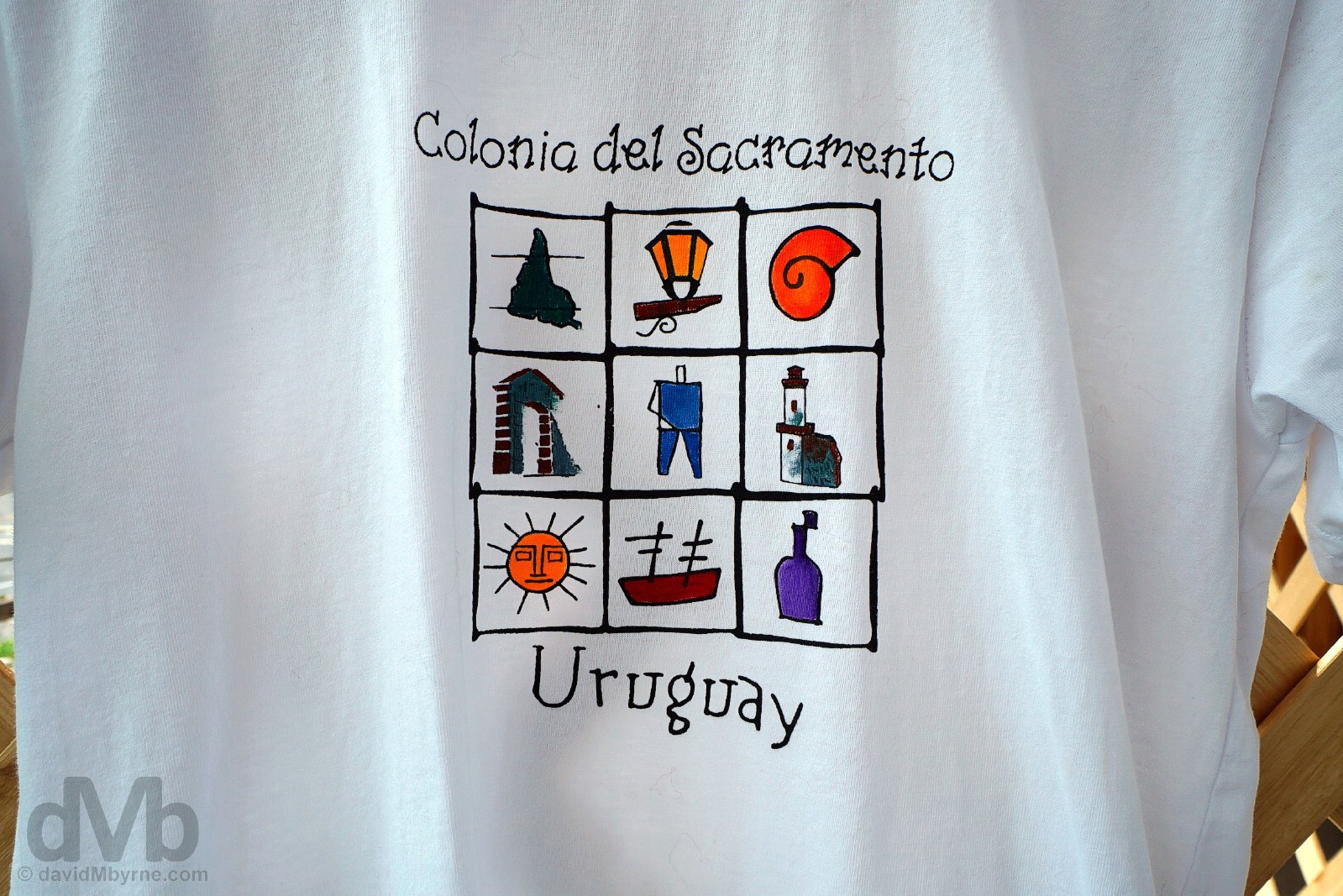
Barrio Historico, Colonia del Sacramento, Uruguay. September 20, 2015.
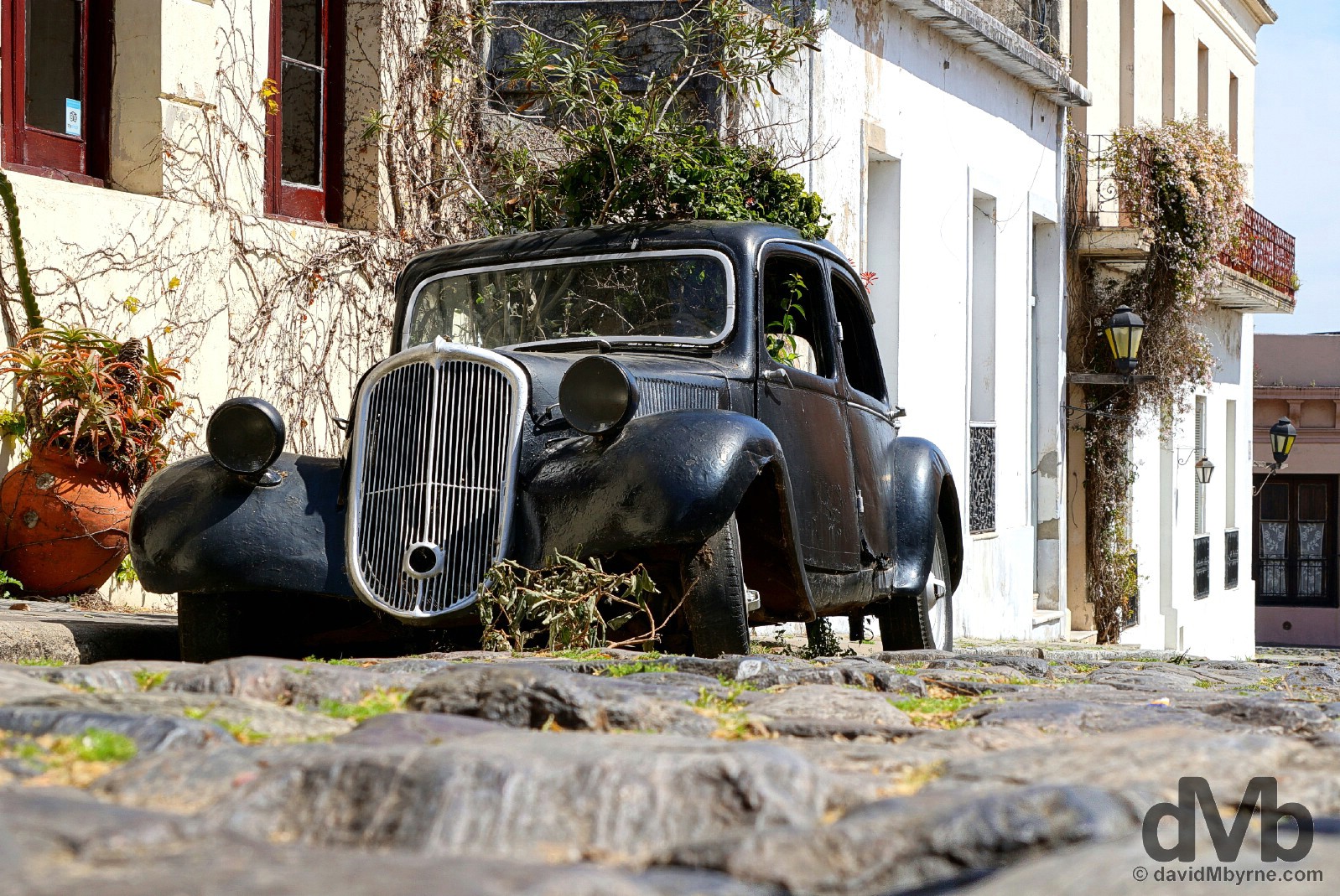
There are a lot of abandoned classic cars on the streets of the Barrio Historico adding, of course, to Colonia’s overall stuck-in-time charm. Some look like they could still trundle along the streets of the town, while others clearly haven’t done so in a long, long time. Acting as props for cafes or restaurants, many have been converted to small & unique options in which to enjoy a meal. Even those that look like they’ve been forgotten serve a purpose, like this one acting as a plant pot/vase, ‘Plant It & They Will Come’ no doubt being the idea. De Portugal, Barrio Historico, Colonia del Sacramento, Uruguay. September 20, 2015.
More classic car abandonment/props on the streets of Colonia’s Barrio Historico.
- Colonia del Sacramento, Uruguay. December 7, 2015.
- Rusting on the streets of Colonia Del Sacramento, Uruguay. December 7, 2015.
- Old Ford. Colonia Del Sacramento, Uruguay. December 7, 2015.
- De Portugal, Colonia del Sacramento, Uruguay. September 20, 2015.
– Governor Antonio Vasconcellos commenting on Colonia del Sacramento in 1737
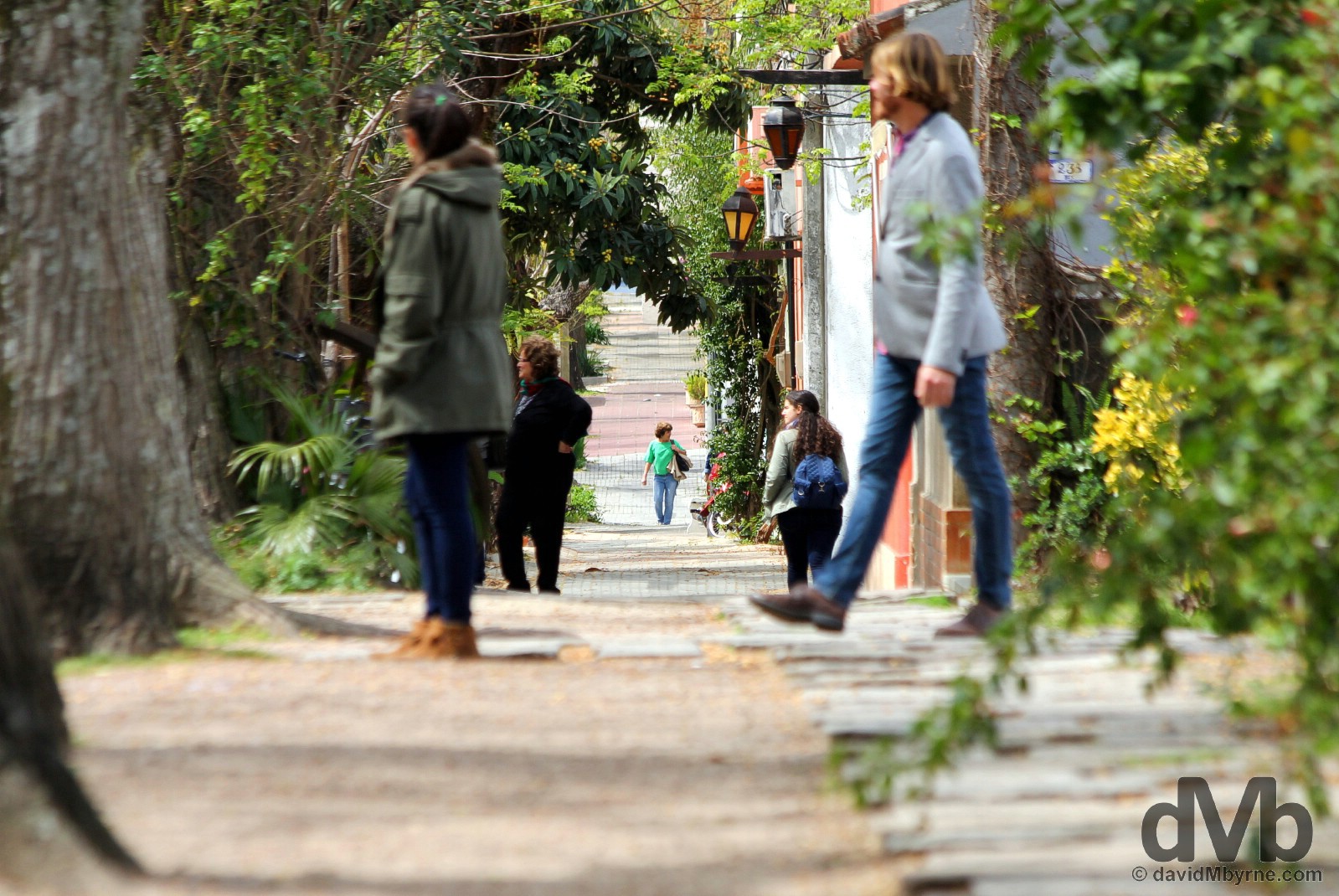
Barrio Historico, Colonia del Sacramento, Uruguay. September 20, 2015.
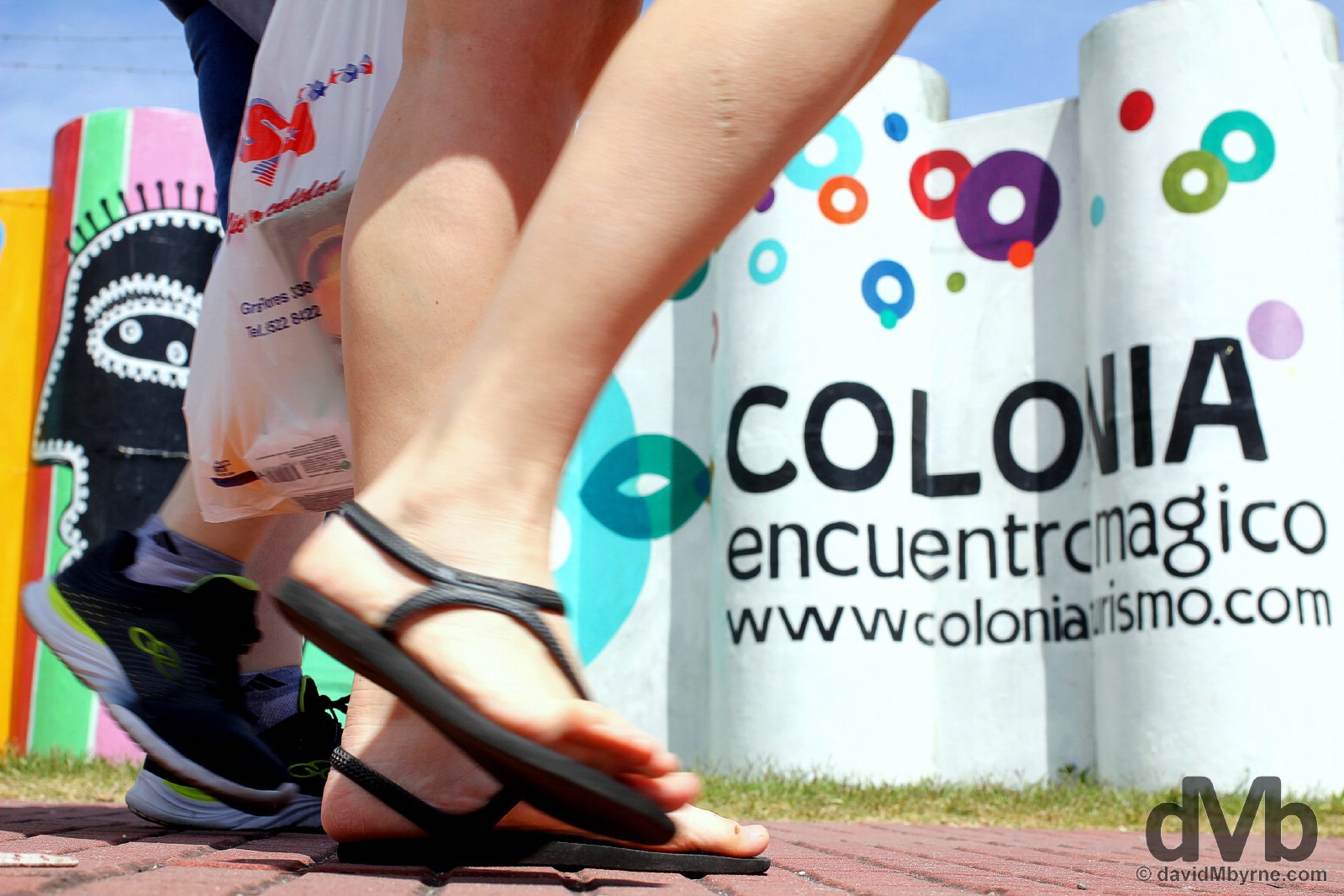
Going for a walk to Real de San Carlos, Colonia del Sacramento, Uruguay. December 7, 2015.
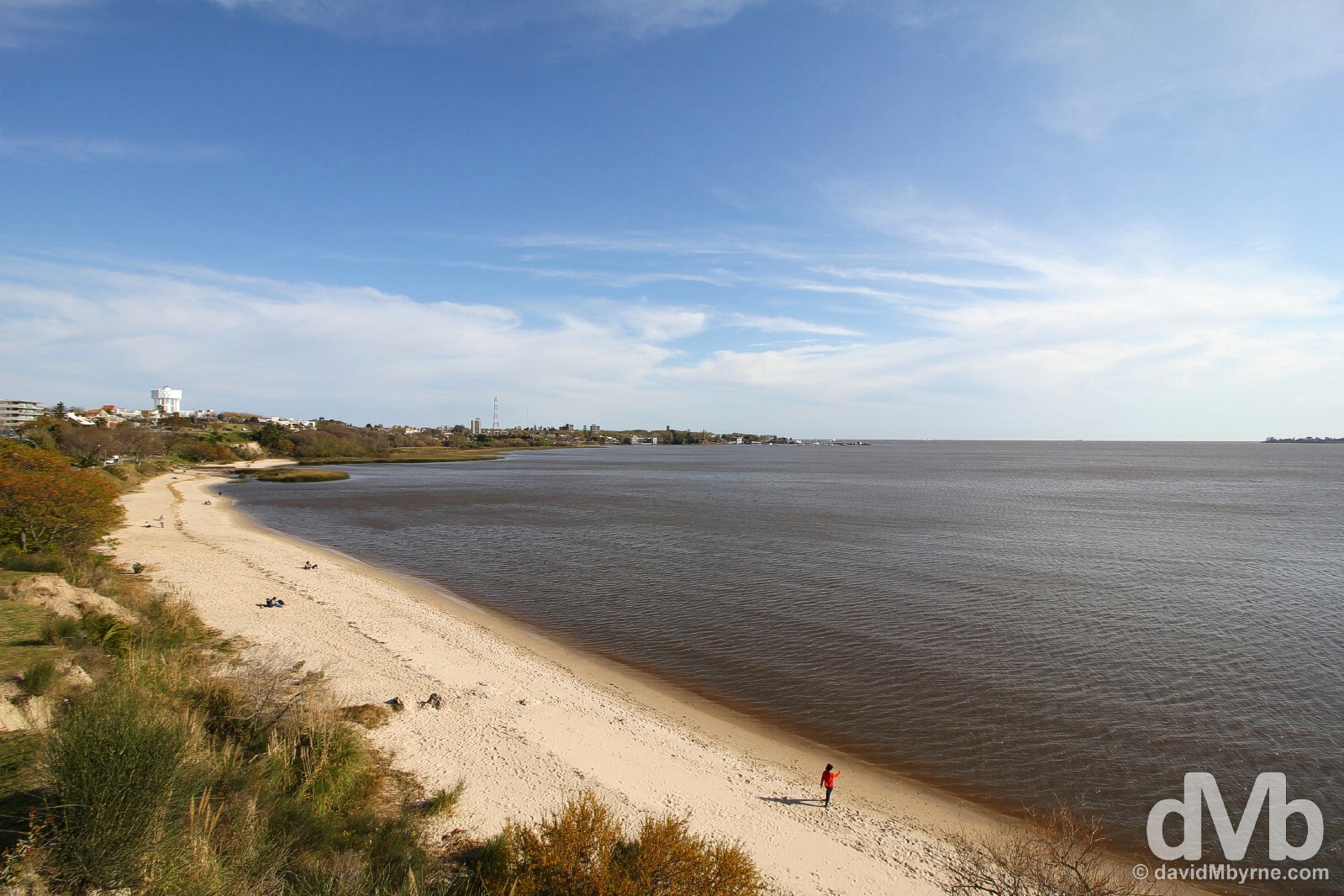
Colonia isn’t just about its compact Barrio Historico. I took a 10-kilometre round trip walk out of the Old Town to the Real de San Carlos area of the city to view the remains of an early 20th-century 10,000-seat bullring that I assumed would be photogenic – it wasn’t/isn’t. However, the walk was nice with good views over the region’s stretch of sand that is Playa urbana Blaneario Municipial and the sweep of coastline back to the peninsula that houses Colonia’s Barrio Historico. Colonia del Sacramento, Uruguay. September 20, 2015.
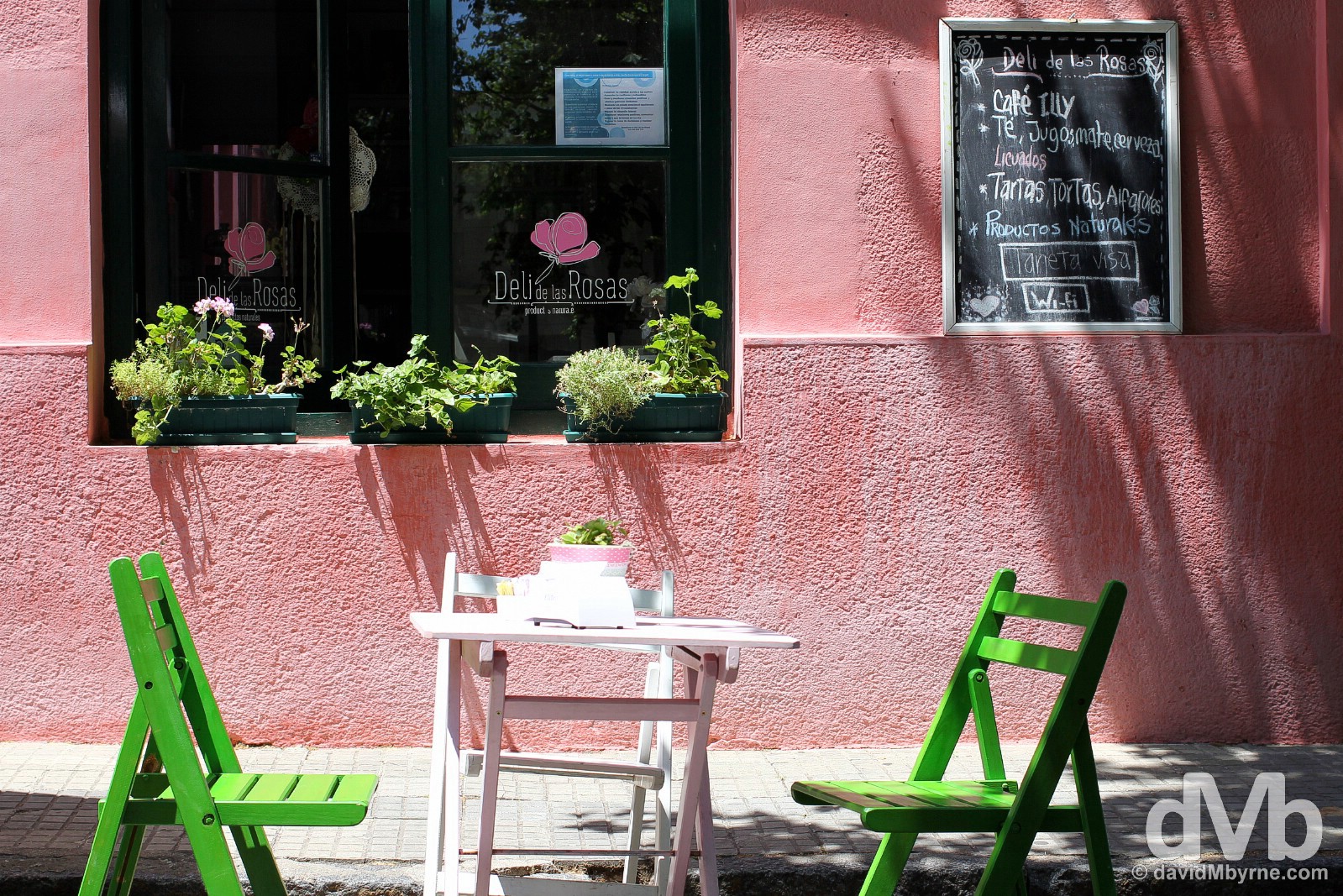
There are dozens of cafes and restaurants in Barrio Historico. All are tastefully & quaintly decorated employing ever more eye-catching colour schemes. It’s all part of the Colonia sell. Deli de las Rosas, del Colegio, Barrio Historico, Colonia del Sacramento, Uruguay. December 7, 2015.
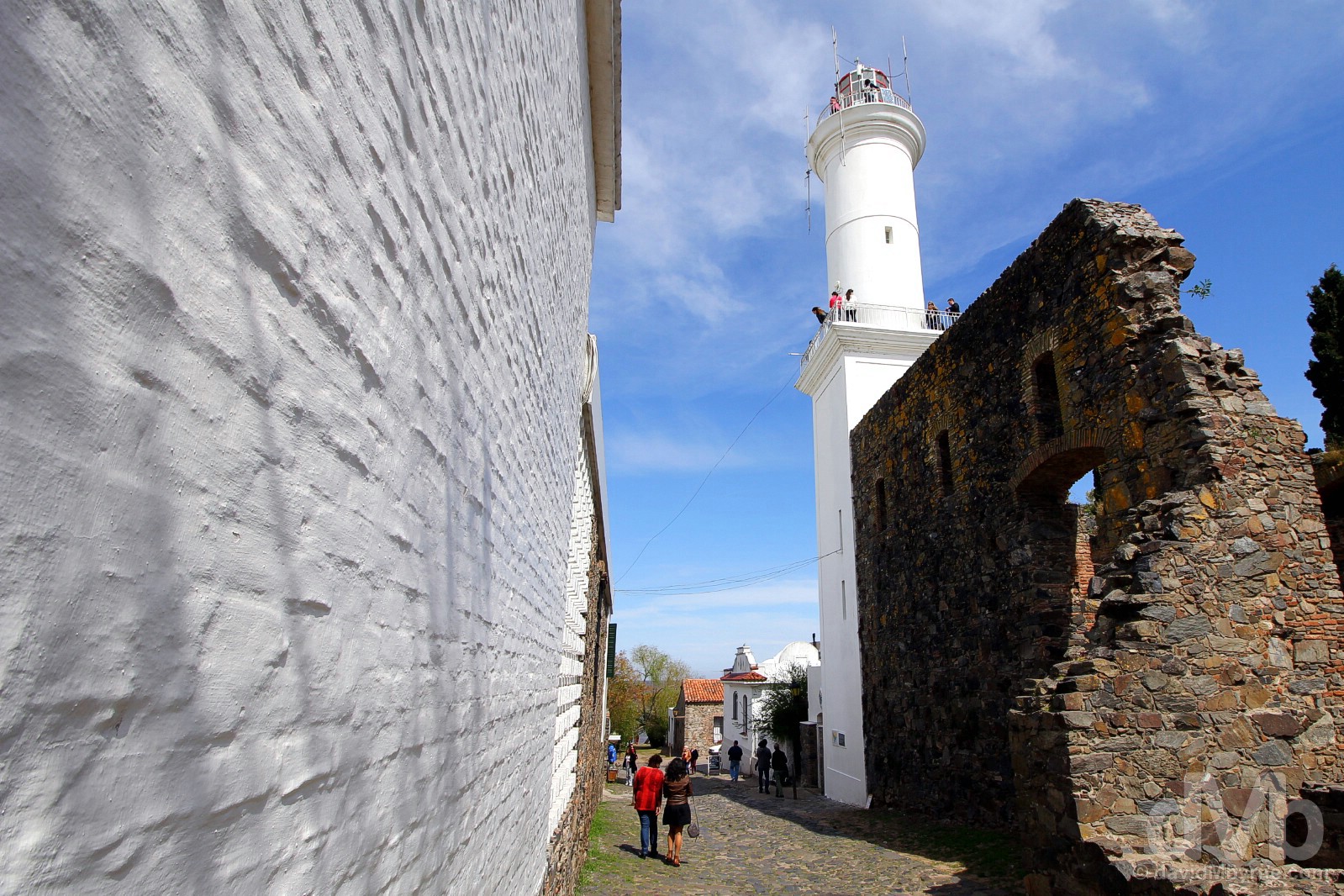
Vying with the twin towers of Iglesia Matríz for the town’s highest structure is the restored 19th-century lighthouse rising from the ruins of Barrio Historicio’s 17th-century Convento de San Francisco. The Colonia del Sacramento Lighthouse as seen from de San Francisco, Barrio Historico, Colonia del Sacramento, Uruguay. September 20, 2015.
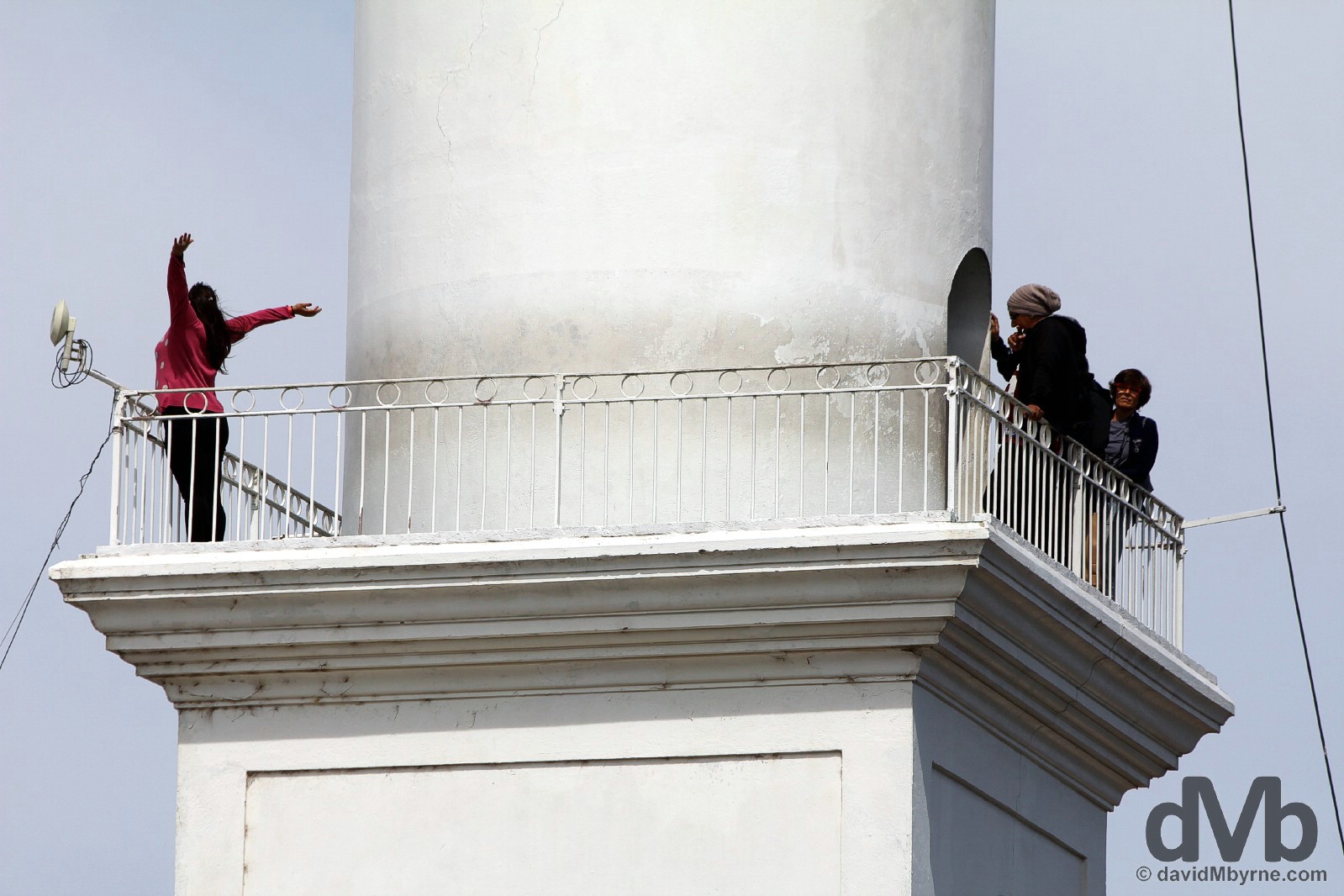
Soaking in the views from the Colonia del Sacramento Lighthouse, Barrio Historico, Colonia del Sacramento, Uruguay. September 20, 2015.
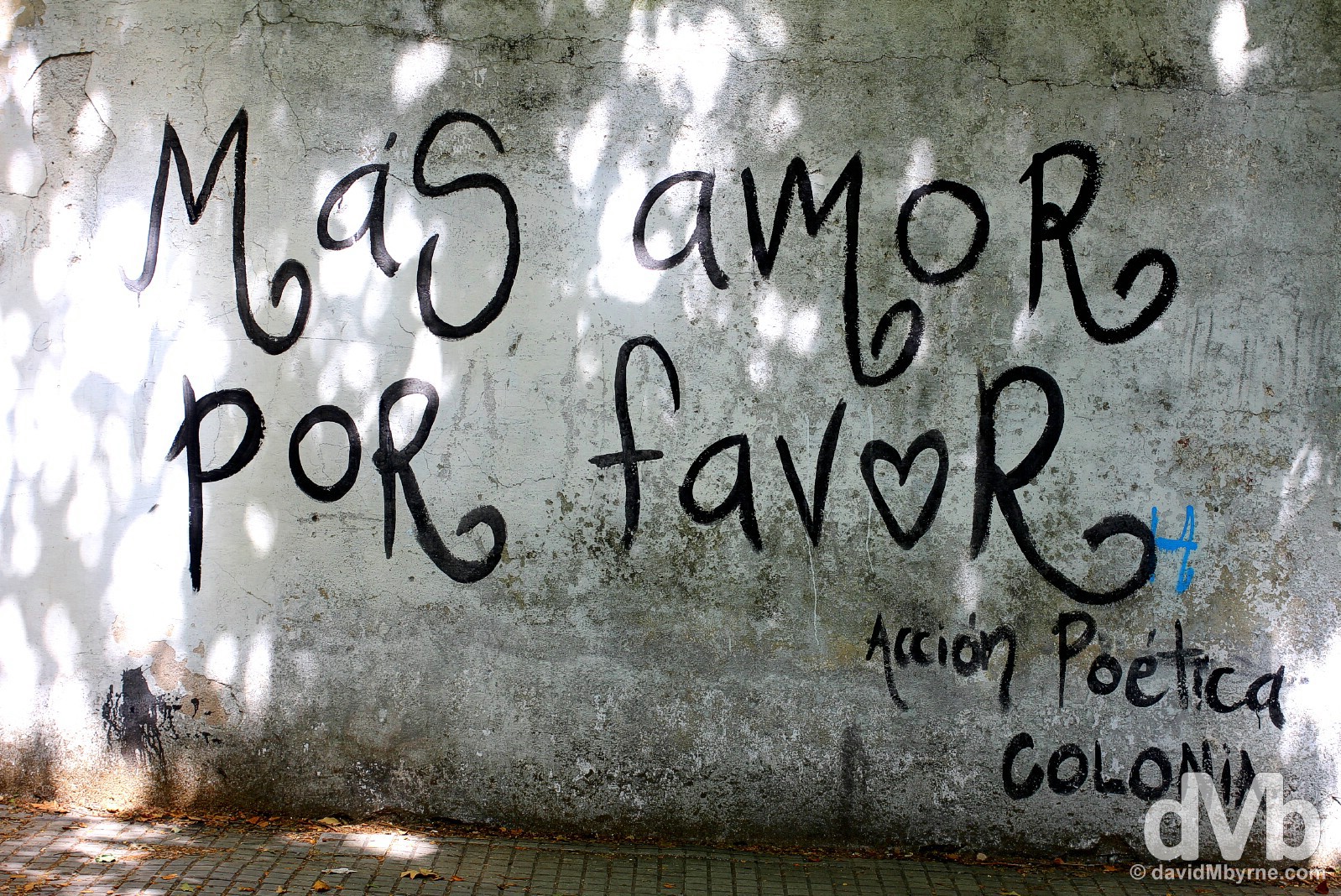
‘More love please’. You already have all the love I can spare, Colonia. Barrio Historico, Colonia del Sacramento, Uruguay. December 7, 2015.
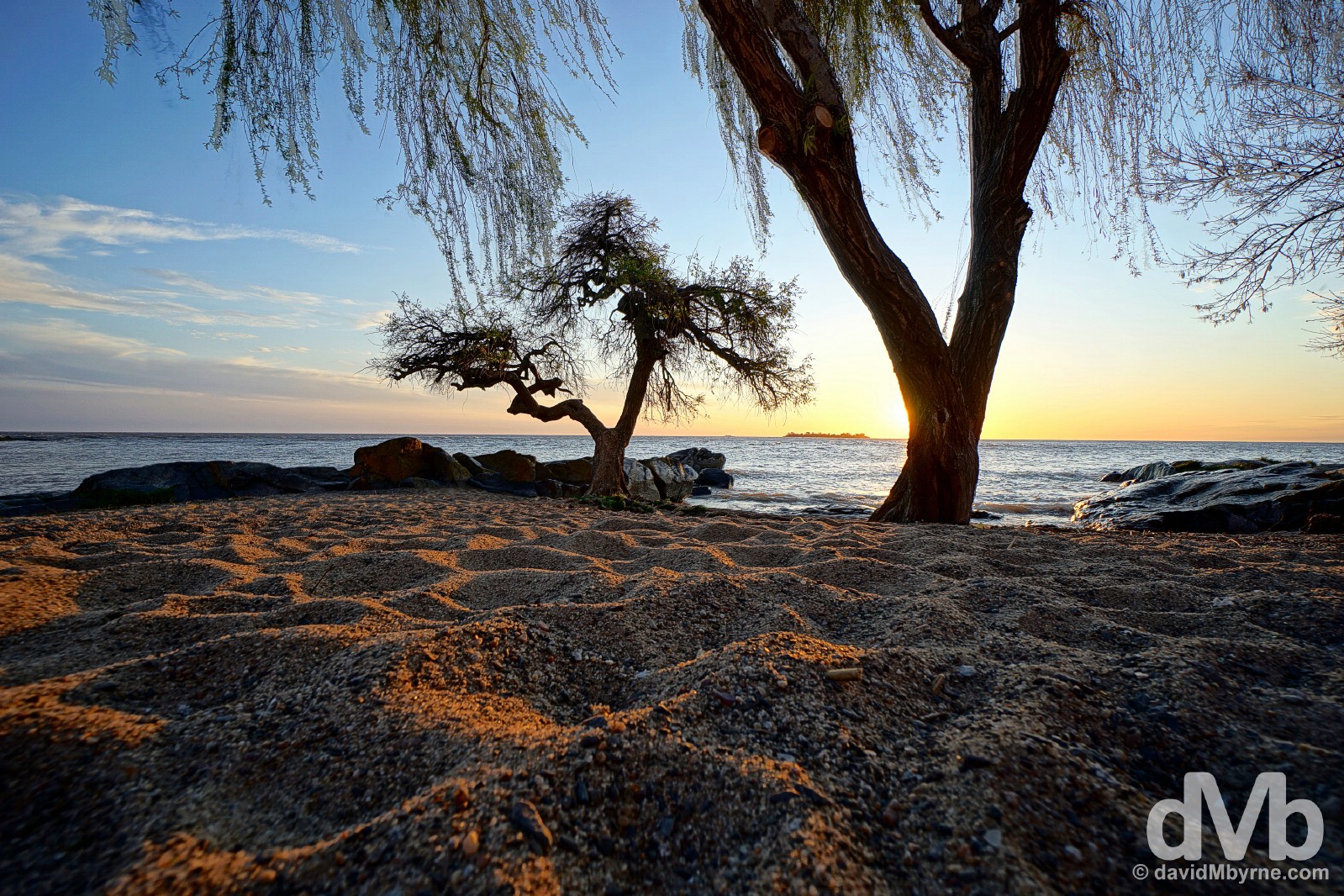
Sunset over Rio de la Plata. Yes, geographically it is located to the east on the South American continent, but Colonia still manages epic sunsets; it’s renowned for them, attracts many a canoodling couple and is yet another reason to love this place. Barrio Historico, Colonia del Sacramento, Uruguay. September 20, 2015.




